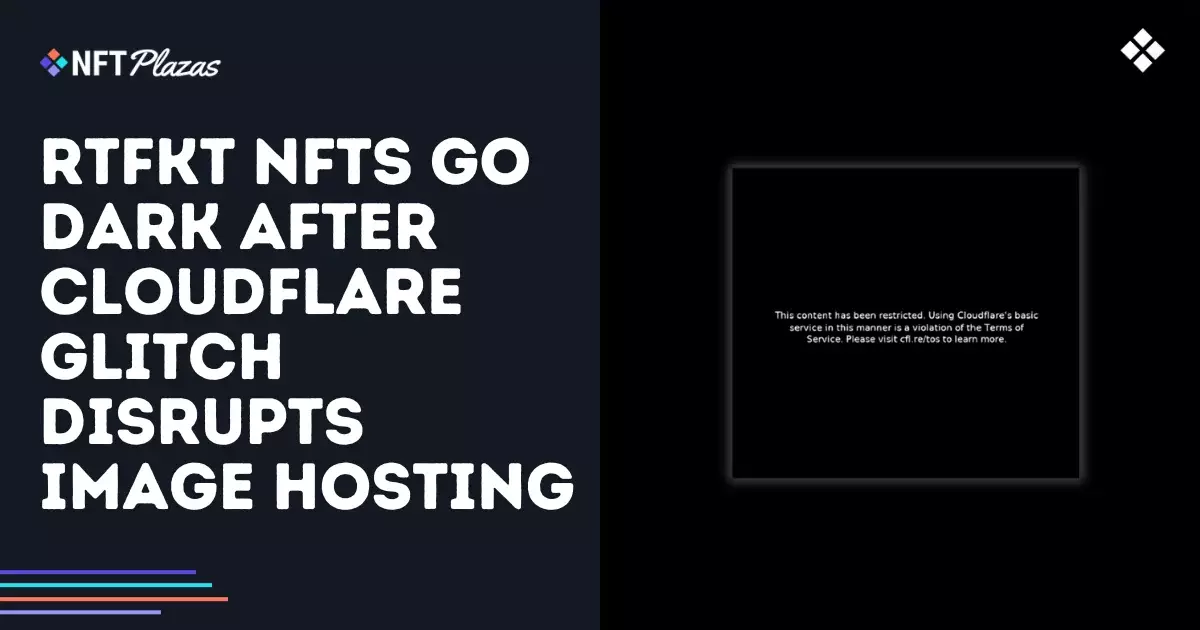The rapid evolution of the NFT market has been nothing short of a technological marvel, but recent events surrounding the Clone X and Animus collections have laid bare the lurking weaknesses within this digital frontier. On April 24, 2023, collectors faced a disconcerting reality when their prized assets transformed into blank screens, displaying only a notice of a “terms of service violation.” This did not occur amidst a security breach or a volatile market fluctuation, but rather due to a third-party hosting mishap stemming from the unfortunate closure of the RTFKT studio, a victim of Nike’s corporate maneuverings in December 2024.
This incident is a stark reminder of the fragility woven into the fabric of centralized digital services. To think that ownership of NFTs—a concept predicated upon decentralization and user control—could hinge upon an external supplier’s terms is unsettling. Big players like Nike must be scrutinized for decisions that truncate innovation and push creators into the shadows, threatening the integrity of their creations. The irony is palpable; those who invested thousands in digital art were left with a digital void, emphasizing how much faith—and risk—resides in these supposedly decentralized assets.
The Illusion of Security in Centralized Hosting
More troubling than the momentary unavailability of visuals is the inherent vulnerability that the incident exposed. Though the NFT tokens and associated metadata remained safe on the blockchain, the reliance on platforms like Cloudflare for image hosting signifies a dangerous trend in the NFT landscape. Cardillo’s revelation about the downgrade of RTFKT’s account before a crucial renewal deadline is a glaring example of the unpredictable nature of dependence on centralized services. When digital art is stored off-chain, the access to that art is no longer in the hands of the creator or the collector; it’s at the mercy of a service provider driven by policies and profit margins.
In a market where art and investment converge, such interruptions jeopardize both pleasure and profitability. Collectors could only gaze at generic black screens, void of the vibrant images they once cherished, raising questions about the long-term viability of NFTs as a reliable asset class. This moment should not be brushed aside; it should ignite a dialog about more secure, decentralized solutions within this burgeoning market.
Building a Resilient Future with Decentralized Solutions
Recognizing the pitfalls of traditional hosting, the RTFKT team, led by Cardillo, has initiated a migration to Arweave—a decentralized storage network offering permanent file storage. This strategic shift not only signifies progress but embodies a movement towards resilience. By utilizing innovative solutions like AR Drive, RTFKT aims to safeguard their visual assets against future disruptions, with an estimated cost around $2,800 to transfer approximately 200GB of data. The implications are profound; it could set a precedent for other NFT projects to follow suit and stop relying on fickle centralized services.
However, a critical evaluation begs the question: is $2,800 a reasonable solution when considering the financial stakes involved in the NFT arena? Or does it reveal a larger issue about the pricing of security in digital infrastructure? The necessity for such drastic measures should amplify concerns about the overall sustainability of current NFT frameworks. Collectors and creators alike should demand more, pushing for a landscape that prioritizes decentralized control as a means of securing not just digital art, but the very integrity of the blockchain revolution itself.
This incident isn’t merely a glitch; it’s a wake-up call urging all stakeholders to rethink their strategy in this ever-evolving digital marketplace. The time has come to elevate the conversation around decentralized infrastructures in order to cultivate a more robust and secure NFT ecosystem.


Leave a Reply